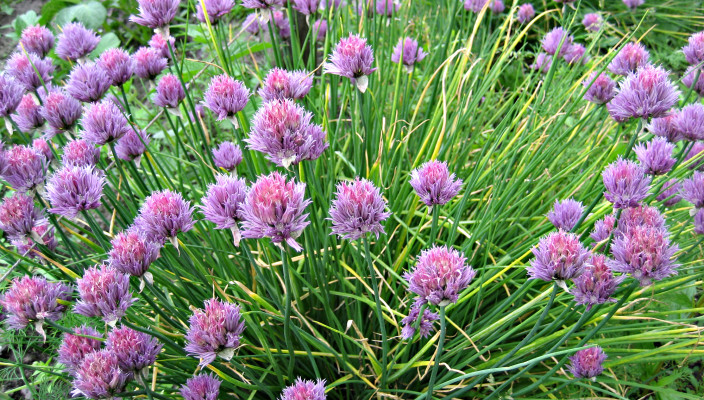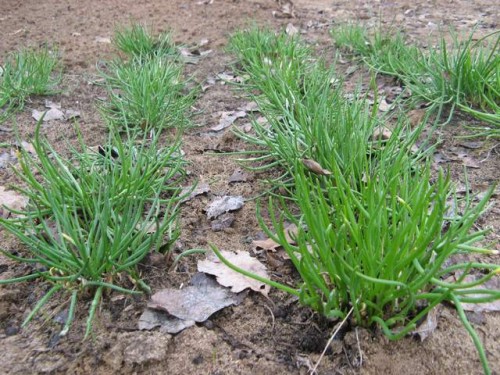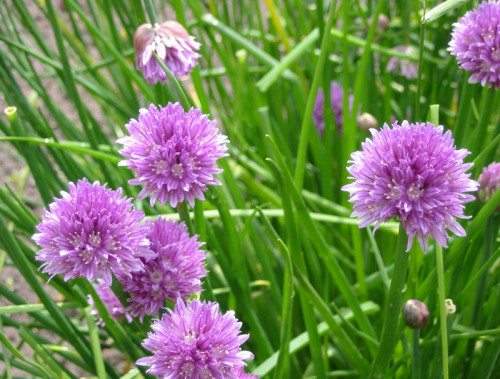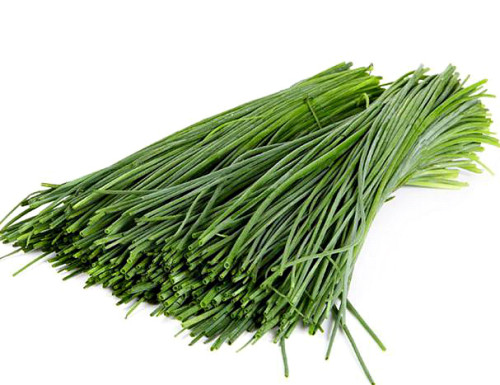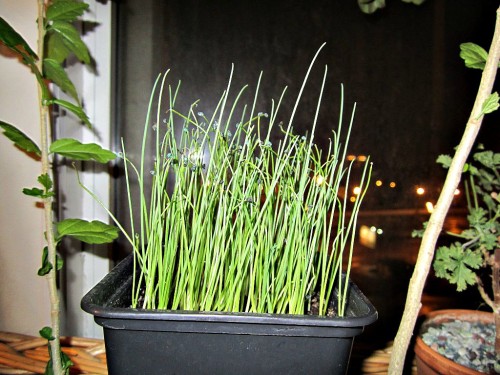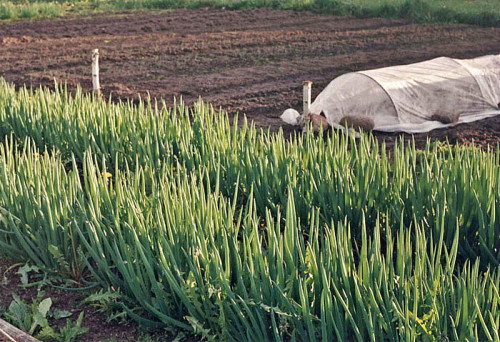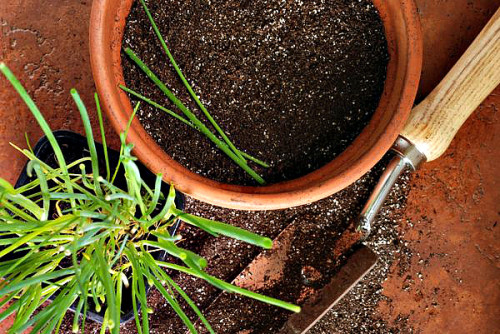Slim Schitt-Luke Tubes appear in early spring as soon as snow comes. Gentle, juicy, to the measure sharp - they grow quickly and replenish our diet first vitamins, because there are no other greenery on open beds yet. Later on the feathers, beautiful red-purple balls appear - Schitt-bow flowers, turning a bed into a bright flowerbed. Our article is devoted to this wonderful vegetable perennial.
Content
a brief description of
Cutter, Sound, Winter bush, English - All these names are one of the onions. So called the bow-cernation depending on the region where it grows.
This spicy plant can be found in many corners of the world. It is so unpretentious that it perfectly feels like in Siberia and in Italy, Portugal, China, Mongolia, Germany, in the north of America and in India. Such popularity is due to:
- ease of agrotechnology;
- streyer;
- winter hardiness;
- decorativeness.
It grows on any soil, the only condition is a sufficient amount of moisture. Two subspecies of this bow are known:
- alpine or Russian with small branching feathers;
- siberian. Feathers are larger than the first, but not branched.
Schitt-onion flower photo:
What is this vegetable
Schitt-onions are grown as greens, and not to get the bulbs - they have a small size. Emerald green feathers use:
- in salads;
- as a filling for pies;
- for the preparation of the first dishes.
They are not only pleasant to taste, but also contain the mass of the necessary organism of vitamins, trace elements. There are in them:
- iron;
- carotene;
- calcium;
- proteins;
- vitamins of group B and PR;
- vitamin C;
- amino acids;
- phytoncides.
Schitt advise to include in the menu to people having problems:
- with heart;
- bubble;
- kidneys;
- liver;
- vessels.
In addition to the nutritional value, this:
- he is a honeycomb;
- helps to fight with such pests like carrot flies;
- promotes to get rid of fungal diseases affecting roses, gooseberries, apple trees.
Growing Schitt Luke
The best soils for it are drum and sandy. It gives a good greens in one place for years to 6. Grow this culture with three methods:
- sowing seeds;
- vegetation;
- through seedlings.
To note: if in the fall shelter the bed with a tight plastic film with a tight plastic film, he will give a green juicy feather to the most frosts.
Preparing seedlings
To get an early schnitton, growing seedlings start in March:
- fill the containers of fertile land;
- we water well;
- snat on the seed surface;
- place on the windowsill.
While the seedlings will grow, prepare the garden:
- As soon as the last snow melted, cover the ground with a layer of compost.
- Diligently harrow and water.
- After 2 weeks we make a series of pits in a depth of one and a half centimeters.
- Retreating from the first row of 0.2 m, lay the following, etc.
- Several plants are planted into each yam.
- We regularly water.
Reproduction through seeds
On the aligned soil, everything is growing better, no exception and schitt-bow. Therefore, before landing seeds, we prepare the earth:
- loose;
- we remove weed roots;
- imagine humid, compost or mineral fertilizers;
- lime, if the soil is sour.
Sowing material should also be prepared accordingly:
- seeds soaked for a day, while changing water 3 times;
- water drain, and seeds lay on the napkin to dried.
Now you can proceed to sowing:
- we make grooves and sow prepared grains. The germination of Schitt-Luca seeds is low, so in bulk more;
- mulch the garden;
- slightly sealing land;
- we feed it when there will be 3 strong sheets on the shootings;
- watering regularly, loose;
- sleep if the shoots are thick.
To note: in the first year, the bouquets are still weak, so the pen is better not to cut.
We divide bushes
Schitt-Luke landing very quickly grow. You can share bushes both in the spring and at the beginning of autumn:
- dig a bush and divide it in such a way that in each part it remains from 8 to 10 roots;
- pour prepared wells;
- sadim, blocking on the same depth, as in the old place, up to 30 plants per 1 square meter. m;
- sealing land around bush;
- pour again.
It will help to master this method of breeding Schitt-Luke video:
Schitt Luca Landing
So that the fresh feathers of the Schitt-Luke have not been translated in winter, take it out by trampling. This is simple:
- dig 2 or a 3-year-old bush along with a lump of land in October or November;
- cut the leaves;
- cut the roots;
- we put in a dry cellar, where the temperature does not rise above +2 degrees C;
- looking in December by choosing one of the options for landing Schitt-Luke: to a greenhouse, a greenhouse or a pot;
- watch that the soil is constantly wet, for which we regularly water warm water (+35 degrees C).
At the same time, if the pot with a planted onion put on the windowsill, where the temperature is in the range of 18-20 degrees C, then less than after 2 weeks of the feathers can be cut when it is colder, you will have to wait about 3 weeks.
IMPORTANT: If you decide to plant a shinet onion in the greenhouse, then the bulbs are closely close to each other. Norma -10 kg of bulbs per 1 square. m.
How to get seeds
Perhaps for Luka Schitt Growing from seeds is the least laborious way. And to have your seeds for growing, do this:
- Choose a few strong plants and do not cut the leaves from them.
- Finger seed bushes in spring fertilizers containing nitrogen. Make about 40 g per 1 sq.m.
- Lock the earth, destroy weeds.
- Make phosphate and potash fertilizers 2 weeks after the first feeding. The norm is 50-60 g per 1 square. M and 20-25 g per 1 square. m, respectively.
- Water up to 5 times over the growing season.
For the 2nd year after landing, flowers will appear. After 2 weeks will begin to ripe the seeds together. They are very small - only 1 g placed 1000 pcs. Now you need to have time to collect them:
- start a collection as soon as you see that the boxes begin to open and show black seeds;
- remove umbrellas selectively, as ripening;
- spread them in the attic or under a canopy;
- screenshot after complete drying;
- separate the husk with a household fan or in the wind.
Schitt-Luke Diseases
Schitt-bow is rarely ill, but sometimes there is such an insect like a onion trips. It destroys not only the plants on the beds, but also intended for pastures the bushes. For its destruction, the following techniques apply:
- The bulbs warm up before planting in water heated to 45-50 degrees since 5-10 minutes.
- Withstand dug up a bush some time in the sun.
- Drop the bed, seated with onion trips and remove all the remnants.
Dangerous for cutter are:
- puffy dew;
- rust.
Save them such agrotechnical events from them:
- alignment and sealing of soil on the beds;
- introduction of peat complex or manure, potash and phosphate fertilizers in autumn;
- feeding ammonium nitrate in spring;
- ruffle ripening;
- regular watering.
Almost all about Schitt-Luke You will learn from this video:

